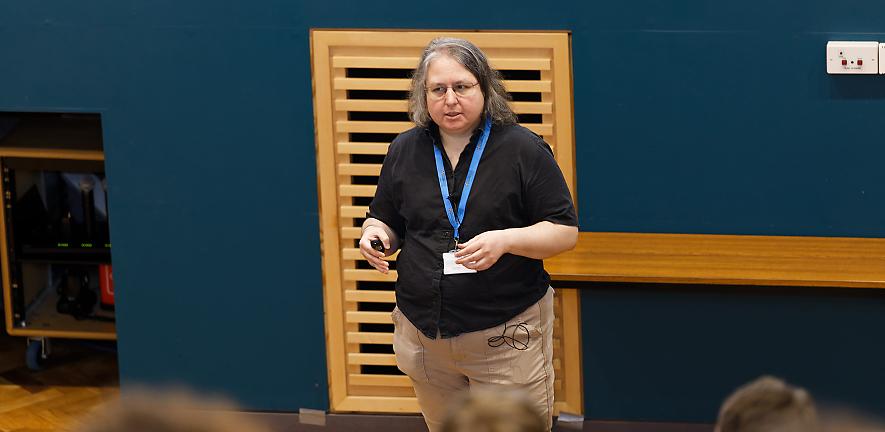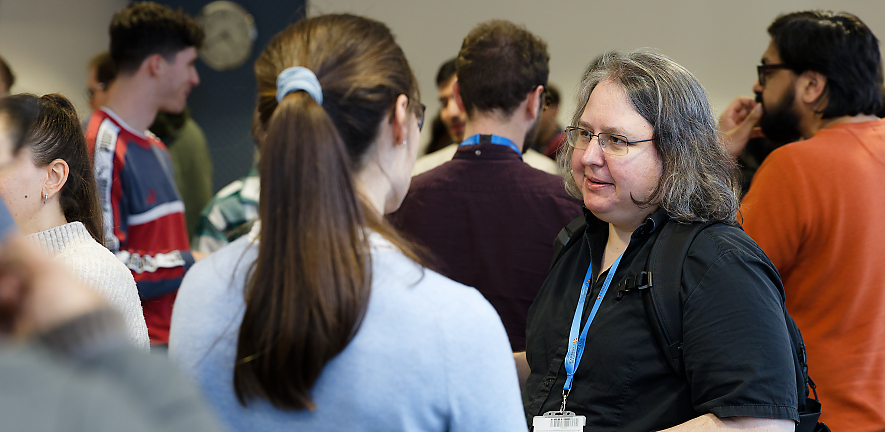
Erin works in theoretical and computational chemistry. As part of her fellowship, she will be visiting the department for a flexible 12-month period to make connections and establish collaborative research projects.
“It’s a very valuable experience and opportunity,” says Erin.
She is hosted by Professor Angelos Michaelides and will also be working with the Department of Physics and the Department of Materials Science and Metallurgy. Since arriving she has established several new research projects that she is hoping to work on over the coming years and plans to integrate the workflow with her group in Dalhousie.
Royal Society Wolfson Visiting Fellowships are awarded to talented international research leaders to foster international collaborative links and enrich scientific research. Erin first visited the department in 2019 when she gave a seminar. She says her enjoyment of Cambridge and our department was a contributing factor in applying for the fellowship.
Computational chemistry

With her own group in Dalhousie and five research students, Erin has multiple projects on the go. One example is developing methods to predict which out of very many possible arrangements will be adopted by molecules when they pack together to make crystals.
“It’s like building a structure with Lego and my work figures out which arrangements are the most stable and likely to form,” she explains. This work is valuable for anyone developing solid state materials, for example, in the pharmaceutical industry.
The group also studies the electronic structures of materials to understand how electrons behave in different substances which has implications for many other technologies. This includes layered solids, which are commonly used for cell and battery technology, and organometallic materials which contain both carbon and metal parts which are used widely in industrial reactions such as making producing semiconductors.
Computational and theoretical chemistry was something that Erin was naturally drawn to: “I was fortunate to do some research in computational chemistry as an undergraduate at Carleton University [Canada], and just continued on in that area. I was interested in theoretical and computational chemistry because it intrigued me how you could use maths to predict virtually everything you can see and touch in the world around us. It’s all determined by chemistry.”

